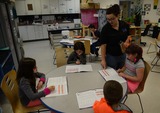
Students will find the perimeter of a hexagonal region.
- Subject:
- Mathematics
- Material Type:
- Lesson Plan
- Author:
- Drew Polly
- Date Added:
- 07/12/2020

Students will find the perimeter of a hexagonal region.

Four full-year digital course, built from the ground up and fully-aligned to the Common Core State Standards, for 7th grade Mathematics. Created using research-based approaches to teaching and learning, the Open Access Common Core Course for Mathematics is designed with student-centered learning in mind, including activities for students to develop valuable 21st century skills and academic mindset.

Algebraic Reasoning
Type of Unit: Concept
Prior Knowledge
Students should be able to:
Add, subtract, multiply, and divide rational numbers.
Evaluate expressions for a value of a variable.
Use the distributive property to generate equivalent expressions including combining like terms.
Understand solving an equation or inequality as a process of answering a question: which values from a specified set, if any, make the equation or inequality true?
Write and solve equations of the form x+p=q and px=q for cases in which p, q, and x are non-negative rational numbers.
Understand and graph solutions to inequalities x<c or x>c.
Use equations, tables, and graphs to represent the relationship between two variables.
Relate fractions, decimals, and percents.
Solve percent problems included those involving percent of increase or percent of decrease.
Lesson Flow
This unit covers all of the Common Core State Standards for Expressions and Equations in Grade 7. Students extend what they learned in Grade 6 about evaluating expressions and using properties to write equivalent expressions. They write, evaluate, and simplify expressions that now contain both positive and negative rational numbers. They write algebraic expressions for problem situations and discuss how different equivalent expressions can be used to represent different ways of solving the same problem. They make connections between various forms of rational numbers. Students apply what they learned in Grade 6 about solving equations such as x+2=6 or 3x=12 to solving equations such as 3x+6=12 and 3(x−2)=12. Students solve these equations using formal algebraic methods. The numbers in these equations can now be rational numbers. They use estimation and mental math to estimate solutions. They learn how solving linear inequalities differs from solving linear equations and then they solve and graph linear inequalities such as −3x+4<12. Students use inequalities to solve real-world problems, solving the problem first by arithmetic and then by writing and solving an inequality. They see that the solution of the algebraic inequality may differ from the solution to the problem.
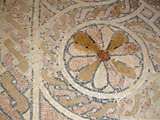
Students write expressions for geometric situations. They examine how different equivalent expressions can show different ways of thinking about the same problem.Key ConceptsStudents use their previous knowledge of how to find the perimeter and area of squares and rectangles. They write algebraic expressions for the perimeter and area of geometric figures. They examine how equivalent expressions, used to represent a problem situation, give clues to the approach the writer of the expression used to solve the problem. In the Challenge Problem, they use the distributive property to find the solution.ELL: For ELLs, access prior knowledge by writing the words area and perimeter on the board. Have students create concept maps associated with area and perimeter. Record students' responses on large poster paper that you can display in the room. The goal is to generate a list of words that students can use as a reference.Goals and Learning ObjectivesAccess prior knowledge of how to find the perimeter and area of squares and rectangles.Write algebraic expressions for finding perimeter or area of figures.Identify equivalent expressions.

This resource is from Tools 4 NC Teachers. This document is the About the Cluster document for Cluster 6 created by the authors of the NC2ML Instructional Frameworks. This document should be read prior to teaching Cluster 6. This document is not remixable since the document has been written by creators of the NC2ML Instructional Frameworks.
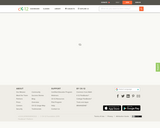
This short video and interactive assessment activity is designed to teach third graders about perimeter in grid.
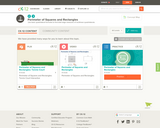
This short video and interactive assessment activity is designed to teach third graders about perimeter of squares and rectangles.

A web page and interactive applet show how to compute the perimeter of a polygon. A polygon is shown that can be resized by dragging its vertices. As you drag, the perimeter is continuously recalculated. Text on the page explains that the perimeter is the sum of the sides. For those who prefer it, in a formula that is given. Applet can be enlarged to full screen size for use with a classroom projector. This resource is a component of the Math Open Reference interactive geometry reference book project at http://www.mathopenref.com.
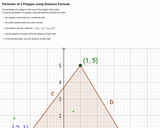
Definition of perimeter of polygon, list of items needed when calculating perimeter of polygon on coordinate plane; image of polygon on coordinate plane with additional information in hotspots. Detailed example of calculation of perimeter.
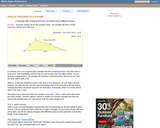
An interactive applet and associated web page that show the relationship between the perimeter and area of a triangle. It shows that a triangle with a constant perimeter does NOT have a constant area. The applet has a triangle with one vertex draggable and a constant perimeter. As you drag the vertex, it is clear that the area varies, even though the perimeter is constant. Optionally, you can see the path traced by the dragged vertex and see that it forms an ellipse. A link takes you to a page where this effect is exploited to construct an ellipse with string and pins. The applet can be enlarged to full screen size for use with a classroom projector. This resource is a component of the Math Open Reference Interactive Geometry textbook project at http://www.mathopenref.com.
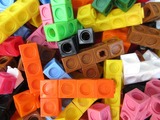
Students apply their understanding of perimeter while designing robots and finding their dimensions.
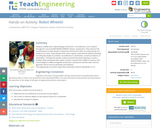
Students solidify their understanding of the terms "circumference" and "rotation" through the use of LEGO MINDSTORMS(TM) NXT robotics components. They measure the circumference of robot wheels to determine how far the robot can travel during one rotation of an NXT motor. They sharpen their metric system measurement skills by precisely recording the length of a wheel's circumference in centimeters, as well as fractions of centimeters. Through this activity, students practice brainstorming ways to solve a problem when presented with a given scenario, improve their ability to measure and record lengths to different degrees of precision, and become familiar with common geometric terms (such as perimeter and rotation).
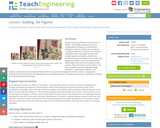
Students learn how different characteristics of shapes—side lengths, perimeter and area—change when the shapes are scaled, either enlarged or reduced. Student pairs conduct a “scaling investigation” to measure and calculate shape dimensions (rectangle, quarter circle, triangle; lengths, perimeters, areas) from a bedroom floorplan provided at three scales. They analyze their data to notice the mathematical relationships that hold true during the scaling process. They see how this can be useful in real-world situations like when engineers design wearable or implantable biosensors. This prepares students for the associated activity in which they use this knowledge to help them reduce or enlarge their drawings as part of the process of designing their own wearables products. Pre/post-activity quizzes, a worksheet and wrap-up concepts handout are provided.

This short video and interactive assessment activity is designed to teach third graders an overview of area and perimeter.
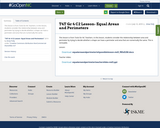
This lesson is from Tools for NC Teachers. In this lesson, students consider the relationship between area and perimeter by trying to decide whether a shape can have a perimeter and area that are numerically the same.
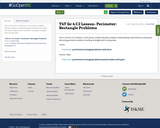
This is Tools for NC Teachers. In this lesson, students develop a deeper understanding of perimeter by solving and discussing perimeter problems involving rectangles with missing sides.
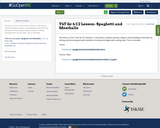
This lesson is from Tools for NC Teachers. In this lesson, students develop a deeper understanding of perimeter by solving and discussing perimeter problems involving rectangles with missing sides. This is remixable.
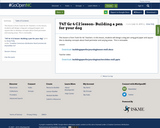
This lesson is from Tools for NC Teachers. In this lesson, students will design a dog pen using grid paper and square tiles to develop concepts about fixed perimeter and varying areas. This is remixable.
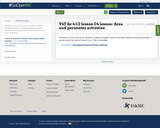
This lesson is from Tools for NC Teachers. Students complete a series of activities related to area and perimeter. It can be used at the start of Clusters 2 or 4. This is remixable.

This lesson is from Tools for NC Teachers. In this lesson, students explore the possible dimensions and areas of rectangles given a fixed perimeter. This is remixable.